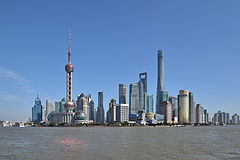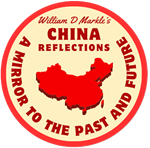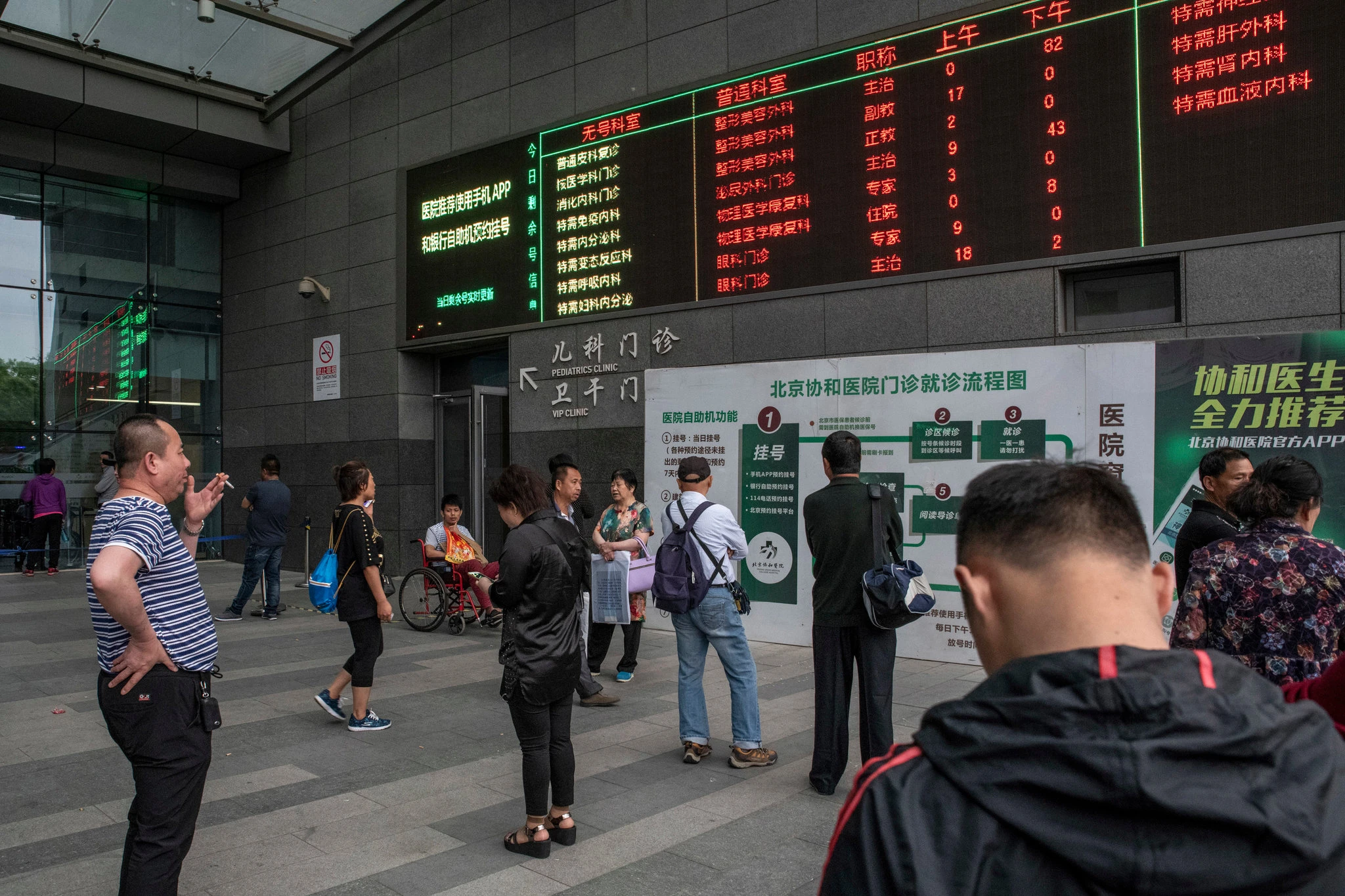Among the China superlatives that we have heard for the last two decades is the fantastic growth in city size – Pudong in Shanghai from fishing and farming villages to the world’s most recognizable skyline; similarly for Shenzhen, Guangdong, and literally dozens of places most of us have never heard of.

Source: Lujiazui 2016.jpg
The US has ten or eleven cities now with a population of at least one million; China has scores, and many of them growing from seemingly nothing. China has about four times the population of the US, but far more than four times the number of larger-than-1,000,000 population cities – by 2018, well over a hundred. 100 cities bigger than Liverpool. What gives? We think we understand the concept of growing economies, and the concept of city growth; but how can these superlatives be so? A couple of ideas, and some clarification on terms –
1. urbanization is not only a global phenomenon, it is a modern economy phenomenon – farm-to-factory increased densities of cities a great deal in the Industrial Revolution, but the modern service-oriented economy demands (and allows for) even much greater densities of people, and, moreover, pulls people into the biggest and most diverse cities at a higher rate than in past decades. There are scale effects – the biggest and most successful tend to get even bigger. (We will ignore the ancient forces that created megacities of a thousand or two thousand years ago – Kaifeng (largest city in the world early in the Song Dynasty, with a population of about 600,000) and Hangzhou, the largest city in the world in the late Song and Yuan dynasties, and into the early Ming, and Rome, about a million population until the collapse; and after the collapse of Rome, no place in western or northern Europe until London, about 1700)
List of Cities in China List of Largest European Cities in History
There was a time in China when manufacturing was conducted each within its own walled danwei, and inside the urban area. Each danwei had its own housing, entertainment areas, and shopping. Each danwei was the Chinese version of Pullman, the ideal city created by George Pullman in the 1880s) Pullman, Chicago This was the Maoist era when land had no value. In the opening and reform under Deng, land began to have realizable value. In the last three decades, Chinese local governments have undertaken policies to encourage or force manufacturing to relocate to the outskirts, opening large swaths of urban land to development of housing and offices and shopping. This is American suburbanization of industry conducted at pace and at a time when necessary manufacturing access to river transport had long past. So, a frenzied catching up. Think of the demand for oil, before and after invention of the internal combustion engine. The oil just laid around for millions of years, before it suddenly achieved value.
2. government fiscal policy matters – After Mao, Chinese cities became the focus of development. “If we want development, we want cities to grow.” China supported cities and helped them grow. “Stadtluft macht frei,” the old saying about the medieval urban place, that “city air makes one free,” was true in China in both senses – that of opportunity for the individual and relative independence of the place from domineering control by a greater unit of government. In the US, cities were strangled by federal policy, administrative law, and political fragmentation. The strangulation continues today – Chinese laugh at our inability to build tunnels under the Hudson, fix subways or airports, or let cities grow. Among cities in China, as in the US, there is the rough and tumble of leader and administrative negotiation over infrastructure expansion and competition for location of business and facilities. A difference is that in China, there is always a leader with enough power to say yes, and then all the pieces fall into place, and development can happen. In the US, with heavily fragmented political power buttressed by rule of law, everyone has the power to say “no,” and no one has the power to say “yes,” and force implementation. Delay is built in to American growth in a way that does not exist in China. The political fragmentation that starves American cities in favor of its suburbs doesn’t exist when the political boundaries of cities in China are so much greater than boundaries in America.
3. definitions matter – This is the most important distinction between American and Chinese cities for understanding the proliferation of huge Chinese cities. Briefly, counties in the US are generally larger than cities, and counties are contiguous across the US – one moves from one county into another. In China, counties are subunits of cities and cities are contiguous – one moves from Hangzhou (city) to Jiaxing (city). In the US, cities are generally quite small – Chicago is only 225 square miles (590 square kilometers) and New York is only 302 square miles (784 square kilometers). The surrounding suburban area dwarfs central city area.
Every city in China has a substantial rural area – even Beijing and Shanghai. A city in China can have mountains and large lakes, in addition to farm land. As you know, there are no mountains or farmland in New York or Chicago. There are historical reasons for the large area of subprovincial and prefecture-level cities, but another reason for concentration of people and development is the historical government fear over food security. By law, and enforced pretty fiercely, each province must maintain at least 84% of its land in rural, or let us say, non-urban development land. This regulation is passed on to cities under the province’s jurisdiction. The Land Bureau in each city receives an allocation of land each year that can be converted to construction land; without the allocation from the central government and the province, no additional land conversion can take place. Some of you know about the truly enormous fill-in-the-ocean projects in some Chinese cities – Dongtou County in Wenzhou is one example, but there are others. This project calls for filling in hundreds of square miles of ocean, creating land for development. Why? Wenzhou is a fast growing city (despite the overbuilding of the last decade) and it is surrounded by hills and mountains that make expansion impossible. So, a solution- create more land.
With unitary government – all power derives from Beijing – it is feasible, and relatively common, for cities to merge and become one administrative place, and for formerly rural counties to become districts of cities. So areas of cities and population totals are a bit less reliable than those in the US, since change in areas and even definitions is more frequent. I encountered problems establishing a population for Hangzhou, a place I know pretty well. For example, Xiaoshan was a county-level city, an independent unit of government (sort of). In 2001, it became a district of Hangzhou, and Xiaoshan as a separate city disappeared. The population and the area of Hangzhou increased substantially. Similarly for the Yuhang district of Hangzhou – merged into Hangzhou in 2001, and Lin’an in 2017. Population and area can grow substantially just by administrative fiat.
4. comparing apples with apples – What makes sense from a political science or administrative perspective is to compare roughly similar sized areas. Hangzhou has a population of 8.7 million, about the same as New York, and three times that of Chicago. But Hangzhou is 16,847 square kilometers; New York is 784; Chicago is 590. What is roughly comparable in area with Hangzhou is the metropolitan planning area of Chicago, including seven or ten counties. The seven counties of northeastern Illinois still have some farmland, and are about 10,387 square kilometers – that is Chicago plus all the land around its satellite cities – Waukegan, Elgin, Aurora, Joliet, Gary. And still, Hangzhou is substantially larger, at 16,847 square kilometers. The population of that larger Chicago planning area is 9.5 million for the seven counties.
5. examples, using area and population –
Hangzhou is the capital of Zhejiang province, and one of the most economically developed cities in China. Dalian, in Liaoning province, is a rarity in China – a city that is better known than its provincial capital, Shenyang. Dalian, too, is a growing city. I pick these two places because I know them reasonably well, and they are certainly characteristic of the size relations in Chinese cities. See the table below. Data is from published sources, wiki and Chinese government estimates, but I make no claims to precision. The urban population of Hangzhou (means what?) is said to be about 5.6 million in the 2010 Census; Shenyang, about 5.7 million, Shanghai 20.2, and Dalian, 3.9. For “urban,” my own preference is to use the districts of a city, as inexact as that may be. Some comparisons –
Place Area, km2 Population, x 106 Population density, per km2
Liaoning Province 145,900 43.9 300
Zhejiang Province 101,800 55.6 550
Illinois State 150,000 12.8 89.4
New York State 141,300 19.9 159
Note that Liaoning and Zhejiang are of roughly similar size as the States of Illinois and New York. Here you see the roughly 4x greater population in China. Zhejiang has significantly larger GDP than Liaoning; New York, more than Illinois
Shenyang 12,980 8.3 (2010) 640
– urban districts 571 3.8 6,655
Shenyang
Dalian 13,237 6.7 (2010) 532
– urban districts 550 2.1 (2015 est.) 7,721
Dalian
Hangzhou 16,847 9.4 (2017 estimate) 570
– urban districts 706 3.7 5,240
Hangzhou
List of Cities in China by Population and Built-up Area
Shanghai 6,341 24.0 (2017 est.) 3,800
Shanghai
note – these data define Shanghai as only urban, which is not the case from casual observation. Better data would show Shanghai urban area as much more dense than indicated above.
New York 784 8.7 10,400
Shanghai is close to twenty times the size of New York City in area, with about three times the population.
Cook County 4,230 5.2 2,129
City of Chicago 590 2.7 4,594
Chicago planning area 10,387 9.5 seven counties
The “urban districts” of Hangzhou are reported at 706 km2, and 3.7 million people. I know the Yuhang district quite well, and that is not included in the urban district data. Yuhang is now quite densely built-up suburban, with the main offices for Alibaba and many other companies, and thousands of new apartments. So, as always, data is only … data.
But one can see that the urban and suburban part of Hangzhou (districts) is much closer to the size of Chicago, and much closer in population. The population densities of the urban districts of Shenyang, Dalian, Hangzhou, and even Shanghai are reasonably close to those for New York and Chicago. Again, some liberal allowances are needed for interpretation of the data.
6. for decades, political career advancement was partly determined by GDP advancement – Chinese have always valued cities as seats of power, in a way that Americans have not. Without exception – I think – the provincial capital is the largest city by population in any province. Political power is united with economic power. Compare with American state capitals. After Deng, and opening up, the advancement of political careers depended in part upon achieving a target rate of GDP growth in the province, city, county, or district. In addition to feeling modern economic pressures, leaders in China competed to grow their own economies, and growth was most easily defined by real estate growth. So, the pressures to urbanize in a country with no history of suburban trains-to-downtown to permit office sector workers to live far from their jobs. Concentration was important for GDP growth as well as for satisfying the needs of a modern economy. (Don’t get me started on short term v long term GDP growth, or the impact of excessive bad debts. Careers are made or lost in five years).
7. GDP growth is easy when you have determined goals and the power to achieve them – as a last note, I want to point out that the development goals in American urban planning and Chinese urban planning were at one point broadly similar – to provide for more people, more GDP generated, more taxes paid locally. There have always been local exceptions, and quality of life is more of a concern in planning now in the US than was the case thirty or forty years ago, and certainly more of a concern than is currently the case in China. But let me leave you with an understanding of how easy it can be to achieve GDP growth, if one has the power to control land and location of people and businesses and the growth goal is quantifiable.
As you might know, the National Development and Reform Commission, the economic planning arm of the central government, establishes a target GDP growth for each year in the Five Year Plan. Five Year Plans That national growth rate is then allocated, with some give and take, to individual provinces, and from provinces to cities. A mayor of a city understands what his targets are, and he has five years in which to perform, at which time he is judged on performance and suitability for advancement in governance.
With a target of X% growth per year, how can one accomplish such a task? Quite simple, really. Every piece of the built environment – housing, offices, factories, subways, expressways, universities, hospitals, airports, ports, even recreational facilities – has some estimated cost of construction. While urban planning in China can be quite detailed and sophisticated, planning and implementation are distinct. If one needs to achieve Y billions of yuan in growth, representing X% GDP growth, all one need do is add up the potential projects, create some new projects if needed, and get started on building. Not so hard when you control all the land, the developers and contractors and lenders are mostly state owned businesses with goals similar to your own, and there is little to no power to oppose what is decreed. Lead, follow, or get out of the way is a known sentiment in China.
If you have made it to the end of this piece, I hope you have the idea that while China is densely populated, the densities are not so far from those in normal urban areas in the US. Much of the city growth in China in the last three decades is the result of policies to encourage urbanization, city consolidation, and the ability of governments to focus development in ways absolutely unavailable in the US. Nothing mysterious here – just a different set of policies and priorities. I tell my Chinese friends that Hangzhou is like Chicago; and Shanghai is like New York, except that there are more Chinese in New York. Always good for a laugh.






Huawei – Lie down with dogs, get up with fleas
You know the meme – when you work with bad guys, you should expect to be labeled a bad guy. I mean no disrespect to the thousands of Chinese companies doing business across the world that manage to be profitable without intimate Chinese government relations. But in our globalized, internet era, it is impossible for a high tech company, particularly one as fundamentally important to internet networks, to not be tarnished with the specter of theft of intellectual property and CCP internet control and monitoring of Chinese businesspeople, students, even foreigners.
Probably no one outside a small group of analysts has the actual evidence of real dirt on Huawei. But that is the risk of being a national champion in China. If the government is promoting you, then there must be a government interest in promoting you, beyond just “go team.” This is simply Chinese practical reasoning.
But it seems that lying down with dogs is more than just a saying here. In his extraordinary Sinocism news blog, Bill Bishop continues the Huawei stories. From the February 9 edition, with no repetition in the stories (all should be clickable) –
1. Huawei’s bad start to the Year of the Pig
Trump likely to sign executive order banning Chinese telecom equipment next week – POLITICO:
President Donald Trump is expected to sign an executive order, banning Chinese telecom equipment from U.S. wireless networks before a major industry conference at the end of February, three sources told POLITICO.
The administration plans to release the directive, part of its broader effort to protect the U.S. from cyber threats, before MWC Barcelona, formerly known as Mobile World Congress, which takes place Feb. 25 to Feb. 28.
Mobile network operator’s body GSMA considers crisis meeting over Huawei | Reuters:
Mobile communications industry body GSMA has proposed its members discuss the possibility that Chinese network vendor Huawei [HWT.UL] is excluded from key markets, amid concerns such a development could set operators back by years…
GSMA Director General Mats Granryd has written to members proposing to put the debate around Huawei onto the agenda of its next board meeting, a spokesman for the federation told Reuters on Saturday.
The meeting will be held in late February on the sidelines of the Mobile World Congress, the industry’s biggest annual gathering, in Barcelona.
Trump envoy urges Europe to ‘link arms’ against China – POLITICO:
Describing China’s influence as “malign,” Gordon Sondland, the U.S. ambassador to the European Union, told POLITICO that his country and the EU should overcome their current trade tensions and join forces against the Chinese.
“We should … combine our mutual energies — we have a $40 trillion combined GDP, there is nothing on the planet that is more powerful than that — to meet China and check China in multiple respects: economically, from an intelligence standpoint, militarily,” he said in an interview.
“That’s where the EU and U.S. really should be linking arms,” Sondland continued, advocating for “a quick resolution that would move our trade relationship in the right direction so that we can both turn toward China, which is really the future problem in multiple respects.”
Huawei Deals for Tech Will Have Consequences, U.S. Warns EU – Bloomberg:
“There are no compelling reasons that I can see to do business with the Chinese, so long as they have the structure in place to reach in and manipulate or spy on their customers,” Ambassador Gordon Sondland, Trump’s envoy in Brussels, said Thursday in an interview. “Those who are charging ahead blindly and embracing the Chinese technology without regard to these concerns may find themselves in a disadvantage in dealing with us.”
Huawei representative rebukes US ambassador’s accusation, defends integrity and safety – China Daily:
“Recently, Huawei has been under constant attack by some countries and politicians. We are shocked, or sometimes feel amused, by those ungrounded and senseless allegations,” said Abraham Liu, Huawei’s vice-president for the European region and chief representative to the EU institutions.
“For example, yesterday, the US ambassador to the European Union, Mr (Gordon) Sondland, said (that) someone in Beijing (could) remotely run a certain car off the road on 5G network and kill the person that’s in it. This is an insult to people’s intelligence, let alone the technological experts across the world,” Liu said.
Chinese firm Huawei blocked from ‘sensitive state projects’ and 5G amid security concerns-The Sun:
New laws on foreign investment in the UK will block Chinese firm Huawei from sensitive state projects, The Sun can reveal… senior Cabinet ministers and Britain’s most senior civil servant Mark Sedwill fear Huawei’s involvement in such critical infrastructure could jeopardise national security.
They are planning reforms to allow the Government to ban Chinese firms like Huawei from future involvement in “strategically significant” UK tech projects.
Huawei Says U.K. Software Issues Will Take Years to Fix – WSJ $$:
The telecom giant also said in a letter to the U.K. Parliament that its board of directors has signed off on a companywide overhaul of its software engineering, budgeting $2 billion over five years for the effort..
German ministers meeting to discuss how to deal with Huawei in 5G auction: source | Reuters:
Chancellor Angela Merkel said on Tuesday that Germany needed guarantees that Huawei would not hand over data to the Chinese state before the telecoms equipment supplier can participate in building its 5G network.
German newspaper Handelsblatt said Wednesday’s meeting would focus on whether a security catalog, prepared by the Federal Network Agency and the cyber defense agency (BSI), along with certification rules and a no-spy agreement with China, would be enough to ensure future 5G mobile networks are safe.
Norway’s PST warns against Huawei – Newsinenglish.no:
Justice Minister Tor Mikkel Wara of the Progress Party, who joined Bjørnland at Monday’s PST briefing, later announced that measures would be introduced to reduce the vulnerability of the Norwegian network. The goal is to hinder Norway’s large mobile operators Telenor, Telia and Ice from choosing equipment suppliers that could threaten the nation’s and their users’ security. Huawei is the prime target.
China hacked Norway’s Visma to steal client secrets: investigators | Reuters:
Hackers working on behalf of Chinese intelligence breached the network of Norwegian software firm Visma to steal secrets from its clients, cyber security researchers said, in what a company executive described as a potentially catastrophic attack.
The attack was part of what Western countries said in December is a global hacking campaign by China’s Ministry of State Security to steal intellectual property and corporate secrets, according to investigators at cyber security firm Recorded Future.
China says it is not a threat to Norway, denies cyber espionage | Reuters:
“China poses no threat to Norway’s security. It’s very ridiculous for the intelligence service of a country to make security assessment and attack China with pure hypothetical language,” the Chinese Embassy in Oslo said in a statement on its website.
Huawei Threatens Lawsuit Against Czech Republic After Security Warning – The New York Times:
The warning, which carries the force of law, requires all companies in the Czech Republic that are deemed critical to the nation’s health to perform a risk analysis that takes security concerns into account.
China denies ‘ridiculous’ spying allegations by Lithuania | AFP:
Earlier in the week, two Lithuanian intelligence agencies condemned China for an “increasingly aggressive” spy campaign, which they said included “attempts to recruit Lithuanian citizens”.
Darius Jauniskis, head of Lithuania’s State Security Department, said his agency was analysing the potential “threat” posed by Huawei, whose technology is being used to build the EU and Nato state’s new 5G telecommunications infrastructure.
Huawei offers to build cyber security center in Poland | Reuters:
Italy denies it will ban Huawei, ZTE from its 5G plans | Reuters:
Thailand launches Huawei 5G test bed, even as U.S. urges allies to bar Chinese gear | Reuters:
University of California Berkeley bans new research projects with Huawei after US indicts Chinese telecoms giant | South China Morning Post
Stanford halts research ties with Huawei amid surveillance controversy – The Stanford Daily
Vermont phone carriers in dispute over concerns about Chinese firm Huawei – VTDigger
2. FBI raids Huawei’s San Diego offices
This is a damning story. One argument some defenders of Huawei have used is that the firm’s culture has changed since inception and while it committed an “original sin” of IP theft in its early years now that it is a global tech firm its behavior has changed. This story destroys that argument.
Huawei Sting Offers Rare Glimpse of U.S. Targeting Chinese Giant – Bloomberg:
Diamond glass could make your phone’s screen nearly unbreakable—and its inventor says the FBI enlisted him after Huawei tried to steal his secrets…
The first sign of trouble came two months later, in May, when Huawei missed the deadline to return the sample. Shurboff says his emails to Han requesting its immediate return were ignored. The following month, Han wrote that Huawei had been performing “standard” tests on the sample and included a photo showing a big scratch on its surface. Finally, a package from Huawei showed up at Gurnee on Aug. 2. ..
Shurboff says he knew there was no way the sample could have been damaged in shipping—all the pieces would still be there in the case. Instead, he believed that Huawei had tried to cut through the sample to gauge the thickness of its diamond film and to figure out how Akhan had engineered it. “My heart sank,” he says. “I thought, ‘Great, this multibillion-dollar company is coming after our technology. What are we going to do now?’”..
The FBI raided Huawei’s San Diego facility on the morning of Jan. 28. That evening, the two special agents and Assistant U.S. Attorney Kessler briefed Khan and Shurboff by phone. The agents described the scope of the search warrant in vague terms and instructed Khan and Shurboff to have no further contact with Huawei.
———-
It is an old truism that China tends to be tone deaf in dealing with foreigners, particularly on foreign policy issues. So we find no small sense of irony in the story from Reuters last week Huawei Offers to Build Cyber-security Center in Poland – “China’s Huawei has offered to build a cyber security center in Poland where last month authorities arrested a Chinese employee of the telecommunications firm along with a former Polish security official on spying charges.”
One of the stories circulating in the past couple of years is that Huawei might have stolen some technology early in its life, but those days are over now, all is in the past, now we are in a new era. Stories from the bad old days – In 2002, Cisco Systems Inc. accused (Huawei) company of stealing source code for its routers. Motorola said in a 2010 lawsuit that Huawei had successfully turned some of its Chinese-born employees into informants. And in 2012 the U.S. House Intelligence Committee labeled Huawei a national security threat and urged the government and American businesses not to buy its products. Huawei denied all the claims. The Cisco and Motorola lawsuits ended with settlements.
For anyone still unsure of the extent of Huawei espionage or theft, there is this Bloomberg story – Huawei Sting Offers Rare Glimpse of the US Targeting a Chinese Giant. This story is about a small American company creating a “diamond glass” computer screen that would be stronger than anything now on the market. The diamond glass story is about an IP theft from last August.
The detention of Meng Wanzhou, originally on charges of violating economic sanctions against Iran by using a shell company to get around restrictions, now seems less of a political stunt. From the Chinese foreign ministry – “For a long time, the U.S. has used state power to smear and attack certain Chinese companies in an attempt to stifle legitimate business operations … Behind that, there is strong political motivation and manipulation. We strongly urge the U.S. to stop unreasonable suppression of Chinese companies, including Huawei, and treat Chinese enterprises fairly and objectively.”
Un huh. One can only hope that Huawei is not treated as “fairly and objectively” as Trump treated ZTE.